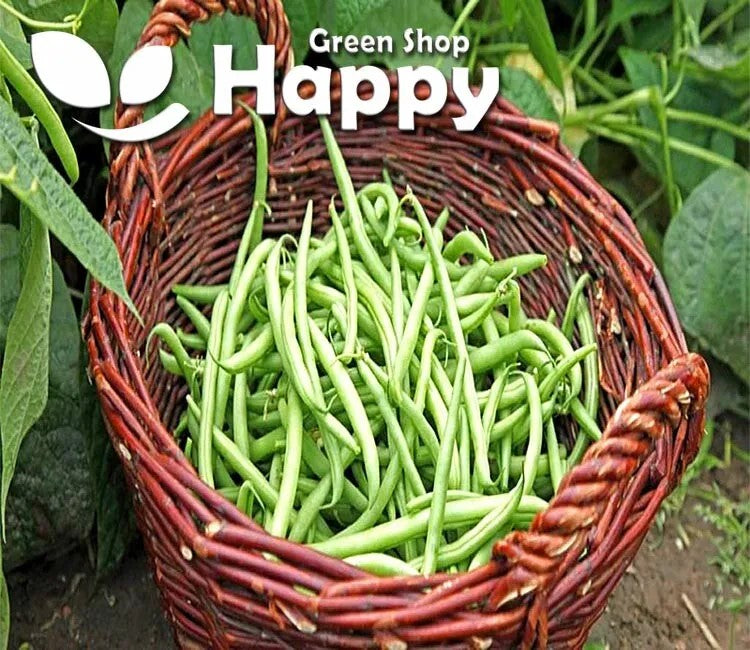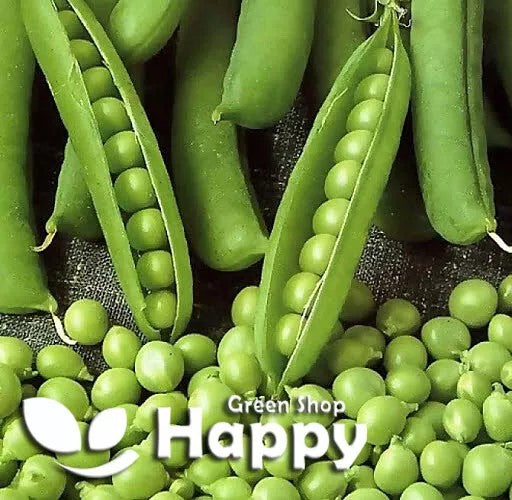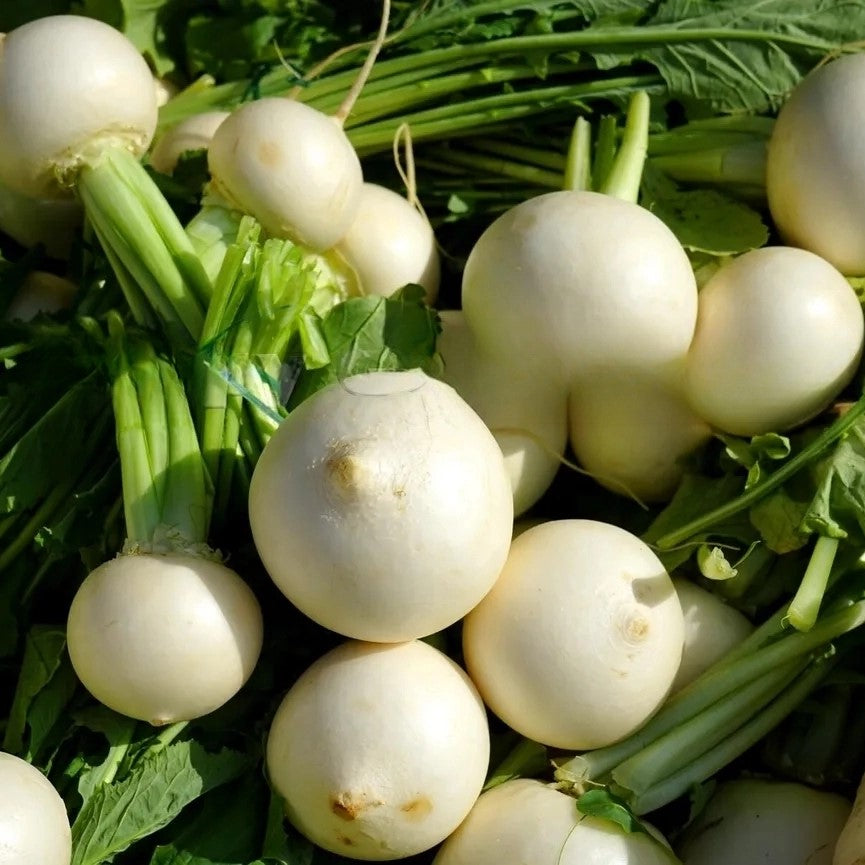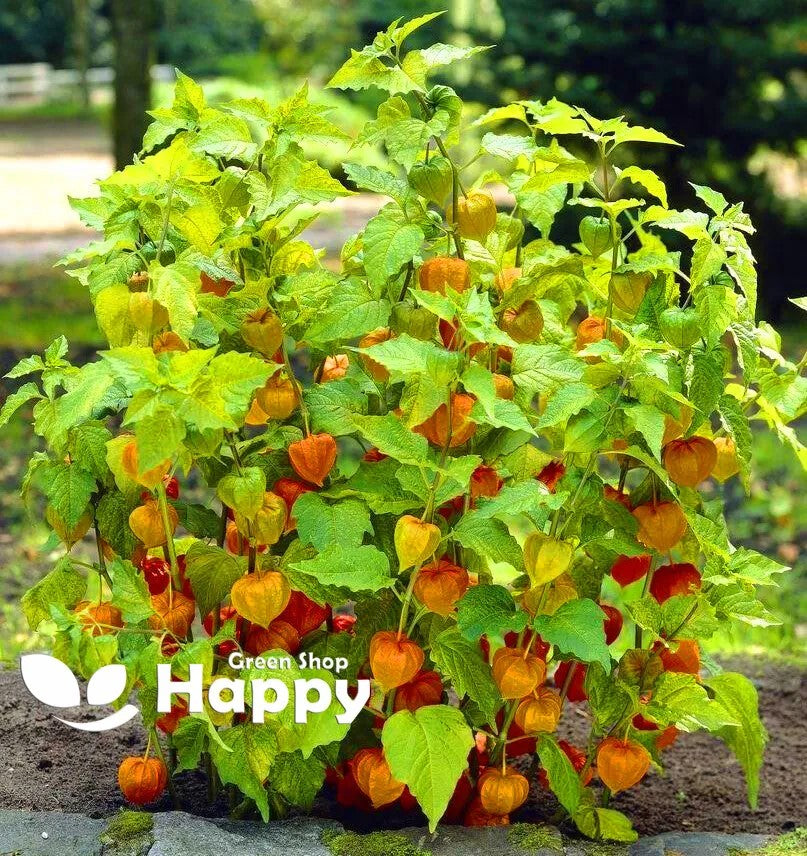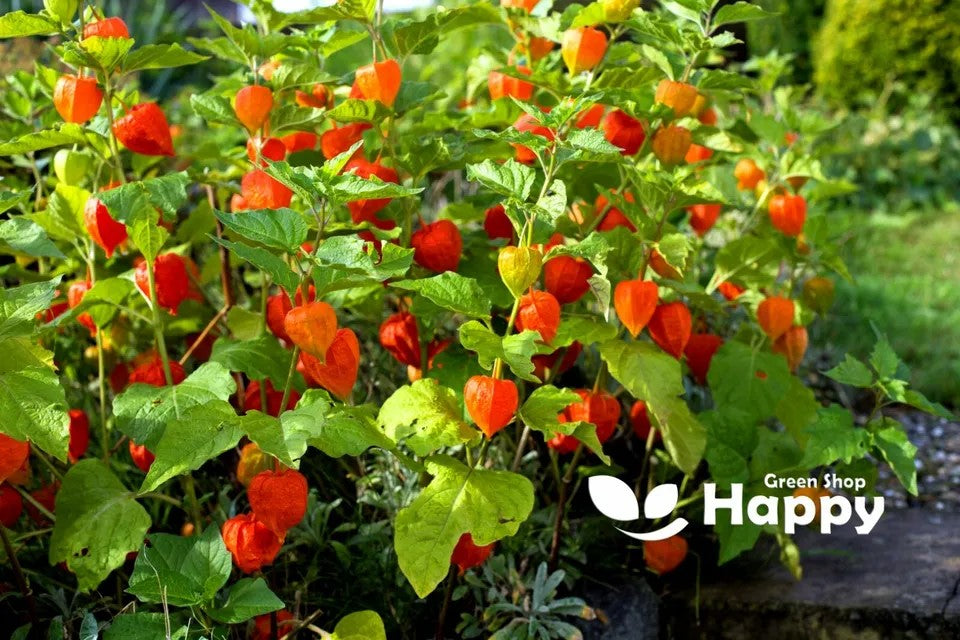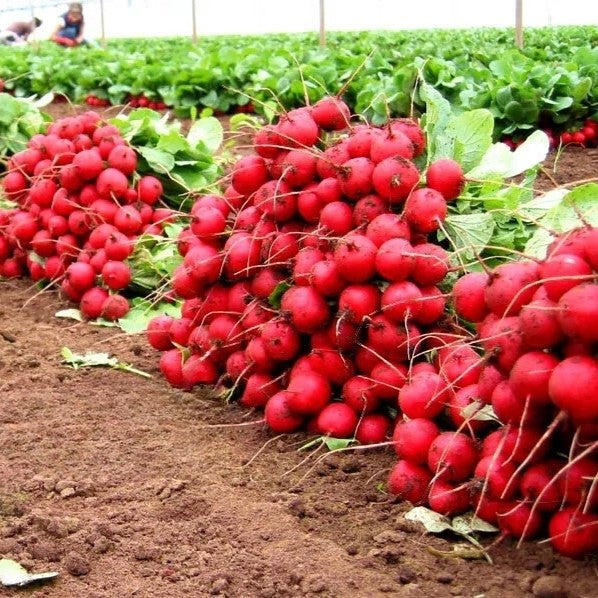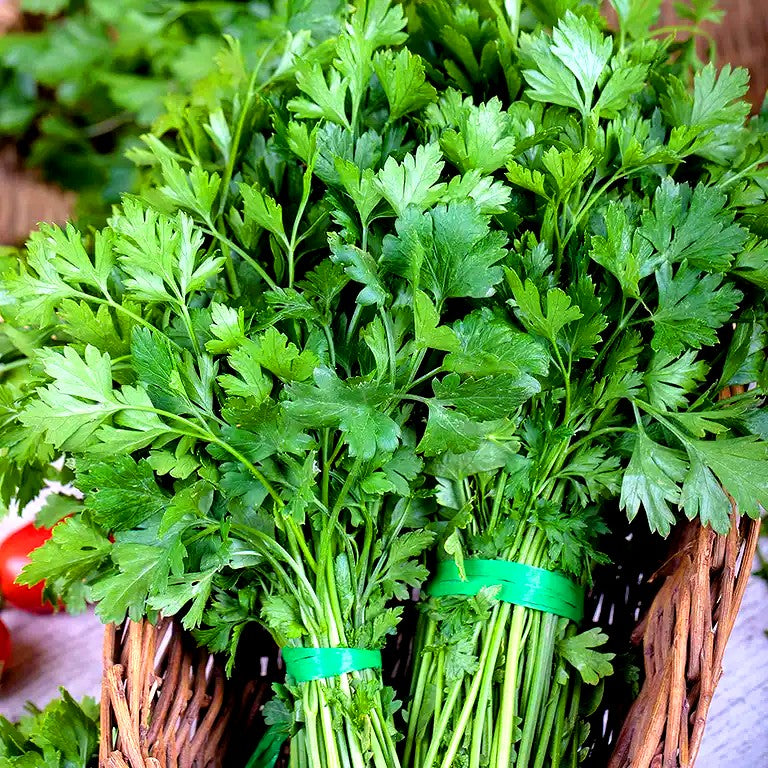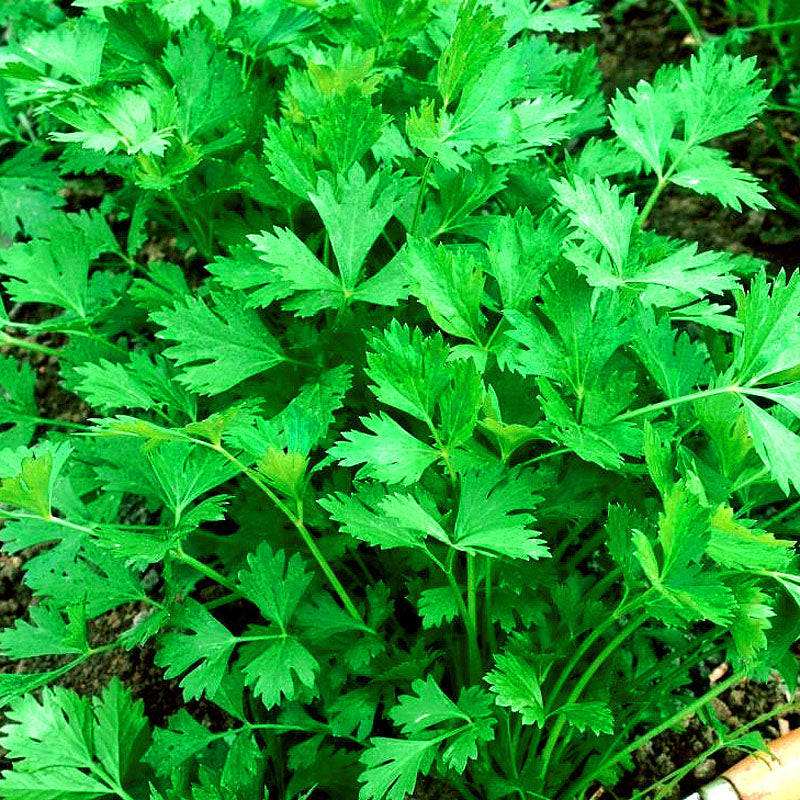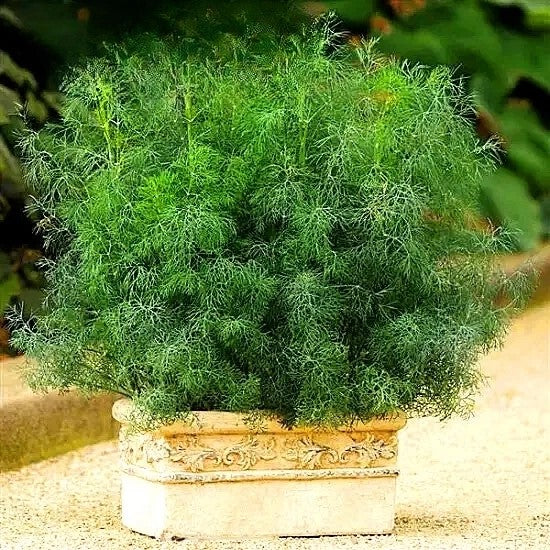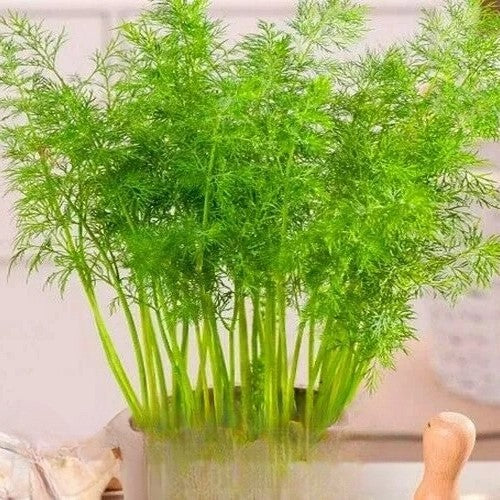Sort by:
17 products
17 products
French Bean ‘Blue Lake’ Seeds (Phaseolus vulgaris)
Harvest crisp, tender beans with French Bean ‘Blue Lake’ (Phaseolus vulgaris). This classic variety produces long, uniform, deep green pods ideal for fresh eating, steaming, or freezing. Easy to grow and highly productive, it’s perfect for vegetable gardens, allotments, and homegrown cooking.
How to Grow
-
Sow seeds directly outdoors after the last frost or start indoors 4–6 weeks earlier.
-
Use well-drained, fertile soil in full sun.
-
Plant seeds 2–3 cm deep and 10–15 cm apart, with rows 40–50 cm apart.
-
Support climbing varieties with stakes or a trellis if needed.
-
Water regularly to keep soil moist, especially during flowering and pod formation.
-
Harvest pods when they are young, tender, and well-filled.
Key Features
-
Long, uniform, deep green pods
-
Highly productive and easy to grow
-
Ideal for fresh eating, steaming, or freezing
-
Hardy and reliable in temperate climates
-
Perfect for vegetable gardens, allotments, and homegrown cooking
Ideal For
-
Vegetable gardens and allotments
-
Fresh harvest, steaming, and freezing
-
Companion planting with nitrogen-fixing crops
-
Homegrown culinary use
Sowing
-
Best time: After last frost outdoors or 4–6 weeks earlier indoors
-
Depth: 2–3 cm
-
Spacing: 10–15 cm apart, rows 40–50 cm apart
-
Prefers full sun and fertile, well-drained soil
Quick Tip
-
Pick pods regularly to encourage continuous production throughout the season.
Early Pea ‘Kelvedon Wonder’ Seeds (Pisum sativum)
Harvest sweet, tender peas early in the season with Early Pea ‘Kelvedon Wonder’ (Pisum sativum). This climbing variety produces long, plump pods packed with flavorful peas, perfect for fresh eating, steaming, or freezing. Hardy and highly productive, it’s ideal for vegetable gardens, allotments, and homegrown culinary delights.
How to Grow
-
Sow seeds directly outdoors from early spring as soon as the soil can be worked.
-
Use well-drained, fertile soil in full sun to partial shade.
-
Sow seeds 3–5 cm deep and 5–7 cm apart in rows 50–60 cm apart.
-
Provide stakes, netting, or a trellis for climbing growth.
-
Keep soil consistently moist but not waterlogged.
-
Harvest pods when fully formed but still tender for best flavor.
Key Features
-
Early-maturing variety with long, plump, sweet pods
-
Hardy climbing and highly productive
-
Ideal for fresh eating, steaming, or freezing
-
Easy to grow in temperate climates
-
Perfect for vegetable gardens and allotments
Ideal For
-
Early-season vegetable gardens and allotments
-
Fresh harvest for cooking or freezing
-
Climbing support with trellises or stakes
-
Companion planting with nitrogen-fixing crops
Sowing
-
Best time: Early spring outdoors
-
Depth: 3–5 cm
-
Spacing: 5–7 cm apart, rows 50–60 cm apart
-
Prefers full sun to partial shade and fertile, well-drained soil
Quick Tip
-
Sow successive batches every 2–3 weeks for a continuous early-season harvest.
Broad Bean ‘Bison’ Seeds (Vicia faba)
Grow a reliable and productive crop with Broad Bean ‘Bison’ (Vicia faba). This classic variety produces large, tender beans perfect for fresh eating, cooking, or freezing. Hardy and easy to grow, it thrives in temperate gardens and helps improve soil fertility with natural nitrogen fixation.
How to Grow
-
Sow seeds directly outdoors from early spring to late spring.
-
Use well-drained, fertile soil in full sun to partial shade.
-
Plant seeds 5 cm deep and 15–20 cm apart, with rows 50 cm apart.
-
Support taller plants with stakes if necessary.
-
Water regularly to keep soil moist but avoid waterlogging.
-
Harvest beans when pods are well-filled but still tender.
Key Features
-
Large, tender broad beans
-
Hardy and productive variety
-
Ideal for fresh eating, cooking, or freezing
-
Improves soil fertility through nitrogen fixation
-
Reliable and easy to grow in temperate climates
Ideal For
-
Vegetable gardens and allotments
-
Fresh harvest for cooking or freezing
-
Crop rotation and soil improvement
-
Companion planting with nitrogen-demanding crops
Sowing
-
Best time: Early to late spring outdoors
-
Depth: 5 cm
-
Spacing: 15–20 cm apart, rows 50 cm apart
-
Prefers full sun to partial shade and fertile, well-drained soil
Quick Tip
-
Sow successive batches every 2–3 weeks for a longer harvest period.
Turnip 'Snowball' – Seeds (Brassica rapa)
Grow crisp, tender, and sweet Turnip 'Snowball', a classic variety known for its round, white roots and mild flavor. Ideal for roasting, steaming, or fresh in salads, this easy-to-grow turnip is perfect for home gardens, allotments, and container planting. Quick to mature, it provides a reliable harvest of uniform, flavorful roots throughout the season.
How to Grow
. Sow outdoors: March – July, 1–2 cm deep in rows 30 cm apart
. Thin seedlings to 8–10 cm apart for proper root development
. Prefers fertile, well-drained soil in full sun or partial shade
. Keep soil consistently moist for tender, sweet roots
. Harvest: 50–60 days after sowing, when roots are 5–8 cm in diameter
Key Features
. Classic white round turnip with mild, sweet flavor
. Quick-maturing and easy-to-grow
. Ideal for roasting, steaming, or fresh salads
. Produces uniform, tender roots
. Suitable for home gardens, allotments, and containers
Ideal For
. Fresh eating, roasting, and steaming
. Gardeners seeking reliable, fast-growing root vegetables
. Succession sowing for continuous harvest
. Companion planting with peas, onions, or cabbage
Sowing & Harvest
. Sow: March – July
. Harvest: May – September
Quick Tip
For tender, flavorful roots, harvest turnips promptly when they reach 5–8 cm; leaving them too long can result in woody texture.
Tomatillo Seeds (Physalis ixocarpa)
Bring authentic Mexican flavors to your garden with Tomatillo (Physalis ixocarpa). These unique plants produce green, globe-shaped fruits wrapped in papery husks, with a tangy, citrusy flavor. Essential for salsas, sauces, and traditional dishes, tomatillos are productive, easy to grow, and a must-have for adventurous gardeners and home cooks.
How to Grow
-
Sow seeds indoors 6–8 weeks before the last frost.
-
Use fertile, well-drained soil in full sun.
-
Sow seeds 0.5 cm deep; keep soil moist until germination (7–14 days).
-
Transplant outdoors after frost, spacing plants 60 cm apart.
-
Harvest when fruits fill their husks and turn green to light yellow.
Key Features
-
Produces tangy, citrus-flavored green fruits
-
Encased in decorative papery husks
-
Perfect for salsas, sauces, and authentic Mexican cuisine
-
High-yielding and easy to grow
-
Thrives in gardens, allotments, and large containers
Ideal For
-
Homemade salsa verde and traditional sauces
-
Vegetable gardens and allotments
-
Cooks and gardeners seeking something unique
-
Companion planting with tomatoes and peppers
Sowing
-
Best time: Indoors 6–8 weeks before last frost
-
Depth: 0.5 cm
-
Spacing: 60 cm apart
-
Prefers full sun and rich, well-drained soil
Quick Tip
-
Grow at least two plants together for better pollination and higher yields.
Radish ‘Gigante Siculo’ Seeds (Raphanus sativus)
Grow impressive, crisp radishes with Radish ‘Gigante Siculo’ (Raphanus sativus). This unique variety produces large, elongated roots with mild, sweet flavor, perfect for salads, roasting, or pickling. Easy to grow and fast-maturing, it provides a striking addition to vegetable gardens and kitchen beds.
How to Grow
-
Sow seeds directly outdoors from early spring to late summer.
-
Use well-drained, fertile soil in full sun.
-
Sow seeds 1–2 cm deep and thin seedlings to 10–15 cm apart.
-
Keep soil consistently moist for best growth.
-
Harvest roots when they reach full size but remain tender.
Key Features
-
Large, elongated roots with mild, sweet flavor
-
Fast-maturing and easy to grow
-
Ideal for salads, roasting, or pickling
-
Adds visual interest to vegetable gardens
-
Hardy and productive variety
Ideal For
-
Vegetable gardens and kitchen beds
-
Fresh salads, cooking, and pickling
-
Companion planting with leafy greens
-
Showcasing unique, large radishes in garden displays
Sowing
-
Best time: Early spring to late summer outdoors
-
Depth: 1–2 cm
-
Spacing: Thin to 10–15 cm apart
-
Prefers full sun and fertile, well-drained soil
Quick Tip
-
Sow in successive batches for a continuous supply of large, crisp roots.
Parsley 'Festival 68' – Seeds (Petroselinum crispum)
Bring fresh, aromatic flavor to your kitchen with Parsley 'Festival 68', a robust, curly-leaf variety known for its high yield and exceptional flavor. Ideal for soups, salads, sauces, and garnishes, this versatile herb thrives in home gardens and containers. Easy to grow and slow to bolt, 'Festival 68' ensures a long-lasting supply of fresh parsley throughout the season.
How to Grow
. Sow indoors: February – April, 0.5–1 cm deep in pots or trays
. Sow outdoors: March – June in fertile, well-drained soil
. Thin seedlings to 15–20 cm apart
. Prefers full sun or partial shade and regular watering
. Harvest leaves continuously to encourage new growth
Key Features
. Curly-leaf parsley with strong flavor
. High-yielding and slow to bolt
. Suitable for beds, borders, and containers
. Long-lasting harvest for fresh cooking
. Easy to grow, versatile culinary herb
Ideal For
. Soups, salads, sauces, and garnishes
. Home gardeners and container cultivation
. Continuous fresh herb supply throughout the season
. Companion planting with tomatoes, carrots, or asparagus
Sowing & Harvest
. Sow: February – June
. Harvest: April – October
Quick Tip
Regularly snip outer leaves instead of cutting the entire plant to promote continuous growth.
Lovage Seeds (Levisticum officinale)
Grow a robust, aromatic herb with Lovage (Levisticum officinale). This perennial produces tall, leafy stems with a strong celery-like flavor, perfect for soups, stews, stocks, and herbal infusions. Hardy and long-lived, it’s ideal for herb gardens, perennial beds, and pollinator-friendly plantings.
How to Grow
-
Sow seeds indoors 6–8 weeks before the last frost or directly outdoors in spring.
-
Use fertile, well-drained soil in full sun to partial shade.
-
Sow seeds 0.5–1 cm deep and thin seedlings to 40–50 cm apart.
-
Keep soil consistently moist until germination (14–21 days).
-
Transplant seedlings outdoors after frost risk has passed.
-
Harvest leaves and stems as needed; roots can be harvested in autumn.
Key Features
-
Tall, leafy perennial with strong celery-like flavor
-
Hardy, long-lived, and easy to grow
-
Ideal for soups, stews, stocks, and herbal infusions
-
Attracts pollinators and enhances garden biodiversity
-
Suitable for herb gardens, perennial beds, and companion planting
Ideal For
-
Herb gardens and kitchen beds
-
Culinary use in soups, stews, stocks, and teas
-
Perennial borders and pollinator-friendly plantings
-
Long-term herb cultivation with minimal maintenance
Sowing
-
Best time: Spring indoors or outdoors after frost
-
Depth: 0.5–1 cm
-
Spacing: Thin to 40–50 cm apart
-
Prefers full sun to partial shade and fertile, well-drained soil
Quick Tip
-
Regularly trim leaves to encourage bushier growth and a continuous supply throughout the season.
Dwarf Dill 'Forrest' – Seeds
(Anethum graveolens) – Compact, Aromatic Herb
Dwarf Dill 'Forrest' is a compact, slow-bolting variety ideal for small gardens, pots, and window boxes. Its fragrant, feathery leaves are perfect for seasoning salads, soups, pickles, and fish dishes. This variety produces consistent, tender foliage and is easy to grow even in limited space.
Key Features
-
Type: Annual herb
-
Height: Dwarf, 25–35 cm
-
Flavor: Classic aromatic dill, mild and fresh
-
Harvest: Leaf harvest from 40–50 days after sowing
-
Use: Culinary seasoning, pickling, fresh salads
Ideal For
-
Small gardens, balconies, and containers
-
Culinary use in salads, soups, and sauces
-
Companion planting in vegetable beds
-
Homegrown, fresh herb supply
Sowing & Growing
-
Sow outdoors: March–June, thin seedlings to 10–15 cm apart.
-
Sow indoors: February–April, transplant seedlings carefully.
-
Soil: Light, well-drained, moderately fertile.
-
Sunlight: Full sun preferred.
-
Harvest: Cut leaves as needed; avoid cutting entire plants for continuous growth.
Care Tips
-
Keep soil evenly moist for tender leaves.
-
Regular harvesting encourages bushier growth.
-
Protect young plants from strong wind or heavy rain.
Showing 9/17

